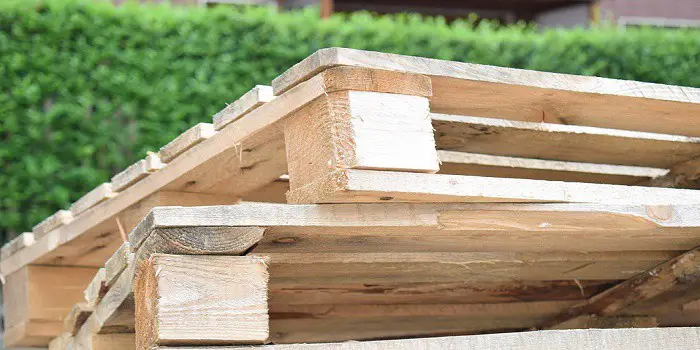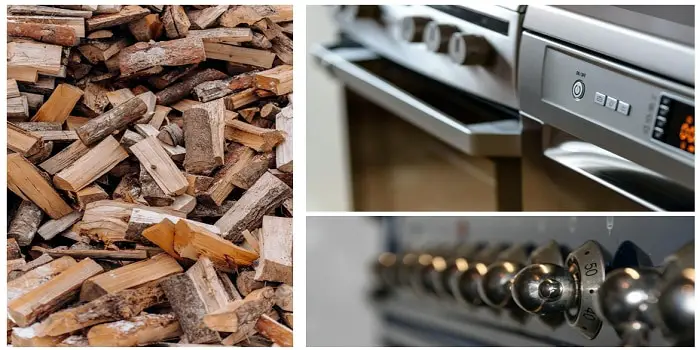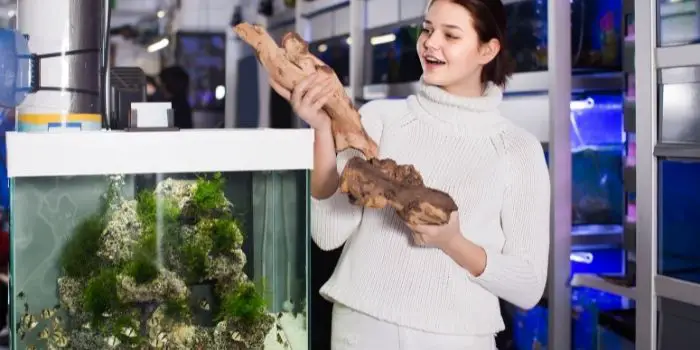
One of the joys of having an aquarium is creating an interesting and beautiful environment for the fish that are inside.
So, it is no wonder that driftwood is a common decoration for many aquariums.
Driftwood looks great, creates a natural-looking environment, and can be found in many places without having to pay for it.
However, finding the right size and shape that fits your aquarium can be a real challenge. And if you do not live near a body of water, purchasing driftwood in a store can be expensive.
But a larger concern is whether the driftwood you find in or near bodies of water is safe for your aquarium.
The answer is generally yes; driftwood is mostly safe to put into your fish tank. But you will have to clean and prepare it to remove any bacteria and other contaminants that the driftwood may have accumulated over time.
What follows is everything you need to know about adding driftwood to your fish aquarium.
What is Driftwood?
Driftwood is simply wood that has been in bodies of water for some time. Most driftwood tends to be washed up on beaches, banks, and shorelines.
The wood itself is quite weathered, gray in color, and pretty gnarled up, thanks to its exposure. Because of its association with natural bodies of water, it makes the perfect decoration for your fish aquarium.
And because it has been exposed to water for a long time, it does not have nearly as many tannins compared to freshly cut wood.
This means that you do not need to prepare driftwood as much as freshly cut wood for your aquarium.
Benefits of using it for a fish tank
Driftwood is aquarium safe – not only does it offer an attractive decoration for your fish tank, but it also provides a natural hiding place for your fish.
Fish and other aquatic creatures have a natural instinct to find hiding places. This makes them feel more comfortable and creates something for them to do when in the tank.
After all, a bare aquarium is a pretty boring place. Having a place to explore and hide provides more things for your fish to do.
Plus, if you have fish that feed on algae, the driftwood you find may have some on it or can be used as a place for food to gather.
Other advantages include the naturally good bacteria that driftwood contains, which helps keep your tank cleaner and healthier for the fish.
Driftwood can also lower the water’s pH value, which can be either good or bad.
If you have to add chemicals to lower the pH value artificially, you may consider adding driftwood to aid in the process.
It will help you save money on purchasing chemicals for this task.
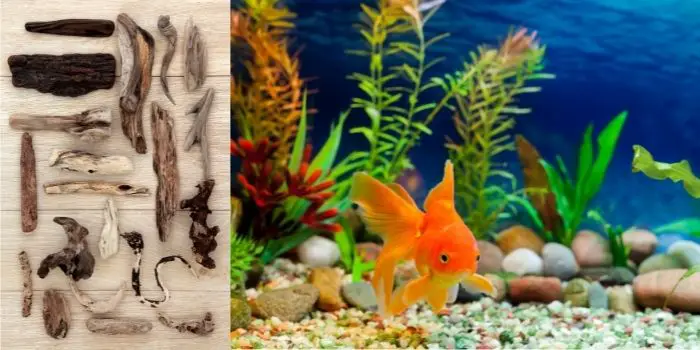
What Kinds of Driftwood are Safe to Use?
If you plan to collect driftwood, it’s good to know which types are well-suited for the project and which ones are not very safe.
So, here is a list you should have a look at…
Woods that are safe for fish tank
Fortunately, a wide variety of exotics and driftwoods can be safely put in an aquarium in your home or office.
Here are the most commonly used by people around the world:
a) Maple Wood
I think maple wood is one of the safest things to add to your aquarium.
It’s generally pale-colored and does not contain the tannins that can leach into the water to change its color and composition, which may be unsafe for fish.
b) Mopani Wood
Mopani wood (also referred to as African driftwood) comes with a two-toned light coloration with gnarled branches.
This wood is generally used to lower the pH levels of water and also is termite resistant.
Plus, it’s a self-sinking wood which means you don’t have to weigh it down when you put it in the aquarium.
c) Malaysian Driftwood
If you plan to collect the wood branches for putting in the aquarium, Malaysian driftwood branches are the most suitable that can serve your purpose.
Basically, found in Southeast Asia, these branches are darker in color, with somewhat stark and linear shapes.
Also, the branches of Malaysian driftwood usually sink in water, making them easy to position underwater.
The only thing you need to keep in mind is that this wood can darken the water in the fish tank and can lower its pH levels.
This can be particularly beneficial if you have fish breeds like tetras that like to live in dark-colored, acidic water.
d) Redmoor Wood
This wood is popular among aquarium owners because of its beautiful appearance.
Redmoor wood is considerably pricier, but it doesn’t leach as many tannins into your water. Plus, it creates a wonderful focal point with red hues and interesting shapes.
But unlike Mopani and Malaysian driftwood, it isn’t too heavy, so you may need to secure it in position with a rock.
e) Marsh Root
Marsh roots are known for their characteristic dark appearance that can make your aquarium look very striking.
The roots come from Eastern Europe and are produced from trees that grow in marshy areas.
The only thing is natural marsh root hasn’t been kept for anywhere near as long as genuine bogwood has.
Besides the above, there are also varieties like American driftwood, Bogwood (abonos), Dried maple leaves, beech leaves, and wooden husks of coconuts that people like to use in their aquariums and fish tanks.
All these wood varieties (including branches, leaves, and roots) can be purchased from pet shops that sell aquarium accessories.
Woods – you should avoid in the aquarium
Typically softwoods should be avoided in the fish tanks, though hardwoods are just fine to use.
Softwoods often have high levels of resin or sap that can seep out of the wood and get in the water, causing issues in the tank.
Trees like pine and other kinds of evergreens are softwood trees, so avoiding any that produce pinecones is a good idea.
The issue with washed-up driftwood is that it can be difficult to know which is which. If you can dig your fingernail into the wood, it’s likely softwood. Other times its hardwood.
The following woods are unsafe for use in an aquarium, and you should avoid using them:
- Cedar
- Cypress
- Grape Vine
- Horse chestnut
- Ivy
- Lilac
- Pine
- Spruce
- Walnut
- Yew
Some are simply toxic, while others rot too quickly. Once you locate a good piece of hardwood driftwood, you can complete the steps mentioned below for preparation.
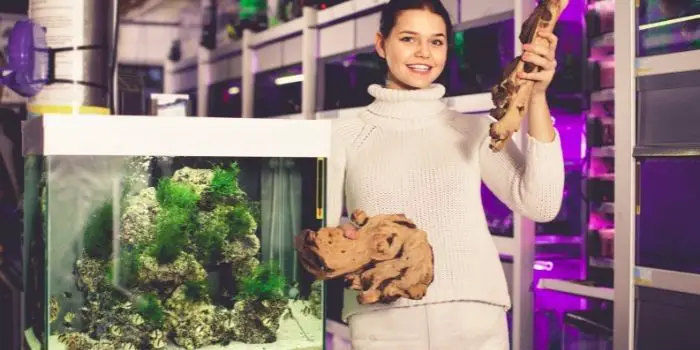
How to Prepare Driftwood for Aquarium Use?
Before adding the wood to an aquarium, you need to prepare it first to ensure the safety of your aquatic animals.
Fortunately, preparing driftwood is a straightforward process, and we’ll show you how to go about this below.
1- Cleaning
First, you need to thoroughly clean the exterior of the driftwood. Start by using a stiff-bristled brush and scrub the driftwood from top to bottom.
Avoid using soap and other such cleaning products and instead, stick with hot water. Otherwise, cleaning agents could harm your aquatic animals.
If there is any bark on the driftwood, it’s a good idea to take it off since this is the most common place for bugs to hide.
It is also recommended that you sand away any of the sharp edges on the driftwood that might hurt your fish.
By cleaning it this way, you can remove any of the dirt on the top layer, though you’ll need to do some deeper cleaning before adding it to the tank.
2- Sterilizing
It is crucial that you get rid of any impurities on the driftwood before you think about placing it in an aquarium.
During this cleaning phase, you will get rid of most of the bacteria, so it’s important that these steps are followed.
To begin, find a pan that is large enough for the wood to be submerged in water. If you have a larger piece of wood, you can use a big stockpot for this.
Boil it for a minimum of two hours unless it is particularly thick or large, in which case you may want to boil it for an additional hour.
The wood needs to be heated all the way into the middle, or else you won’t be sterilizing it fully.
If you aren’t able to get a pot large enough to ensure proper boiling, you may want to consider finding a smaller piece of driftwood.
3- Curing Driftwood
The last step before your driftwood is fully prepared for the tank is curing it.
This will help you get rid of any tannins in the wood, ensuring that it doesn’t change the color of the water or lower the pH levels too much.
Saturating the wood is also a good idea for the benefit of it more easily sinking into the tank without needing to be weighed down.
That said, some driftwood simply will not sink and may need to be anchored no matter how long it has been in the tank.
Curing the wood is a time-consuming but simple process. All you have to do is dunk the driftwood in a container of water and keep it there for as long as two weeks.
Check on the water frequently, and when it darkens because of the tannins, it should be replaced.
Continue this process until the water no longer becomes heavily darkened from the tannins. After this, the driftwood will be ready for use.
Can You Paint Driftwood for Adding Colors?
Yes, driftwood can be painted and put in your aquarium to add a special artistic touch that can give it a unique look.
To get them painted for your fish tank, you should choose the wood pieces or sticks that are in good condition (not rotted or infested by insects).
Prepare them and add a coat of acrylic paint followed by a sealer to make them waterproof. Here is a step-by-step instruction you will generally need to follow…
Step 1 – Pick the driftwood
Check the piece of wood by scraping it with a coin or your fingernail.
If the wood piece can be scraped easily, do not use that but pick another piece.
Step 2 – Prepare for painting
Next, you need to thoroughly wash the sticks to be used to get rid of any debris and grime.
If required, use a firm bristle brush for scrubbing and a little bit of liquid soap/detergent for rinsing.
After completely rinsing the wood, allow the pieces to dry naturally in the sun for a couple of days.
Once the wood pieces are dried, sand them gently using medium-grain sandpaper. And then wipe away the sanded dust with a piece of cloth.
Step 3 – Apply acrylic craft paint
Using a paintbrush and waterproof acrylic craft paint, apply the paint in whatever design or pattern you feel like.
Use freehand design and let your imagination flow on the pieces of wood to give the wood a great rustic look with bright colors.
Once painted, allow the wood to dry for at least 24 hours.
And finally, apply a coat or two of clear waterproof acrylic spray varnish. This will seal the acrylic paint on driftwood to protect it from water, making it safe to use in aquariums.

Can You Put Found Driftwood in an Aquarium?
With all the advantages, it may seem like adding driftwood straight from nature to your aquarium should not be an issue.
However, for saltwater aquariums, the lowering of pH that is caused by adding driftwood should be of concern.
And while freshwater aquariums are more tolerant of pH values, the marine life inside may still be affected.
For saltwater aquariums, one of the challenges is keeping the pH levels high enough for the fish in the tank.
Adding driftwood makes this considerably more difficult under such circumstances.
However, if maintaining pH levels is no issue, then adding driftwood should not be much of a concern.
Given that driftwood has leached out most of its tannins, the type of wood does not really matter either for a saltwater or freshwater tank.
However, since there can be salt deeply embedded in driftwood that comes from the ocean, it is not advisable to put it in a freshwater tank unless you boil it first.
However, it is just better to add driftwood from freshwater sources to freshwater aquariums. That way, you do not have to prepare the wood as much.
Do’s and Don’ts
If you are not sure about what issues might arise when adding driftwood to your aquarium, what follows is a series of dos and don’ts that will help you better understand.
Do’s
- Plan: Locate the best place for driftwood in your tank. Put it in a natural place to help the fish.
- Remove: All moss, lichens, and bark from the driftwood before putting it in the tank
- Cure: Cure the driftwood until all the tannins stop leaking from the wood; if you desire
- Filter: Use activated carbon or chemical filter to clear the water from the tannins
Don’t
- Put in Softwood: Do not place softwood in your aquarium
- Collect Polluted Driftwood: Avoid driftwood from polluted water sources
- Use Cleaning Products: Avoid soaps and detergents when cleaning the driftwood
- Forget to Sterilize: Always sterilize the driftwood before putting it in your tank
- Forget the pH Levels: Driftwood will drop the pH levels, so account for that
Saltwater vs. Freshwater Tanks
Driftwood from freshwater sources is best for freshwater tanks, although it should not be much of an issue for saltwater aquariums as well.
As long as you clean, cure, and sterilize the driftwood properly from freshwater sources, it should be okay for both freshwater and saltwater aquariums.
Keep in mind that the driftwood should be of proper size, in the right location, and have a basic shape that provides enough room for the fish to swim around and under in places.
The more interesting the shape it has, the more tantalizing for the fish it will be, and the more pleasing it is to the eye.

Issues with Using Found Driftwood in a Fish Tank?
There are concerns about putting driftwood into an aquarium which you should be aware of.
This is because the ecosystem of a fish tank can be easily upset by the introduction of something new.
This includes chemicals, pollutants, and organisms that may prove to be harmful to the fish inside.
That’s why it is important to understand the common issues that might occur when adding driftwood to your tank.
a) Bacteria:
Of all the issues that driftwood may cause to your tank, bacteria is probably the most concerning.
Driftwood that has been floating around for years will undoubtedly have picked up some bacterial growth along the way.
It is possible that the bacteria are good and beneficial to your fish tank.
But in most circumstances, the driftwood will contain harmful bacteria which may be indistinguishable from the good kind.
It’s better to be safe than sorry under such circumstances.
So be sure to clean and sterilize the driftwood before putting it in your fish tank.
Otherwise, you risk the fish inside if the bad bacteria multiply in that environment.
b) Infestation:
There are lots of little creatures that may be living inside the driftwood.
Some may be easily recognizable, while others may be almost impossible to see.
Chances are the driftwood does contain living creatures that will not be compatible with your aquarium.
Even if you pull the driftwood straight out of the water, there may be some living organisms inside.
This is why you need to fully clean and sterilize to ensure that such creatures present no threat to the fish in your aquarium.
c) Pollutants:
If the wood looks prepared, then it may contain chemicals that could cause harm to the aquarium.
Only use natural wood that has not been used for something else. In addition, if the water has been polluted, do not use driftwood.
d) Tannins:
There will be tannins in all driftwood. For the most part, tannins are harmless save for their ability to lower the pH value of the tank.
Another issue that does no harm to the fish is the tea-like color of tannins which may discolor your tank.
If you like a clean tank, then you’ll have to be aware that the tannins might discolor it.
However, because the tannins will make the tank look more natural, this may be a pleasing effect.
You’ll find many who like the tea-like color that the tannins provide.
But if you do not, you can cure the driftwood, which will remove most of the tannins that remain.
Final Thoughts
Driftwood can add much to your aquarium. However, there are potential issues that you might find by collecting driftwood from natural sources.
If you want to avoid that, you can always purchase driftwood from a reputable store. Such stores will have driftwood that has been cured and is free of any harmful elements.
But if you want to save some money or have found the perfect piece of driftwood, then you should clean, cure, and sanitize it to ensure it does no harm to the fish tank.
This can be a lengthy process.
So, if you do not have the time or patience, it is generally better to save up the money and buy the driftwood from a reputable seller.
Whichever method you choose, driftwood is a welcome addition to your fish tank.
Not only will it improve the aesthetic value, but it also provides an interesting diversion for the fish living inside.
Creating a happier aquarium for both you and the fish.

Hi, I am Mark Garner a professional carpenter, woodworker, and DIY painter. I live in the small city of Peoria, Arizona as a semi-retired woodworker. I have started this blog with a simple motive to help you with my wood experience in this sector. If you like to know more about what I love doing and how it all got started, you can check more about me here.


